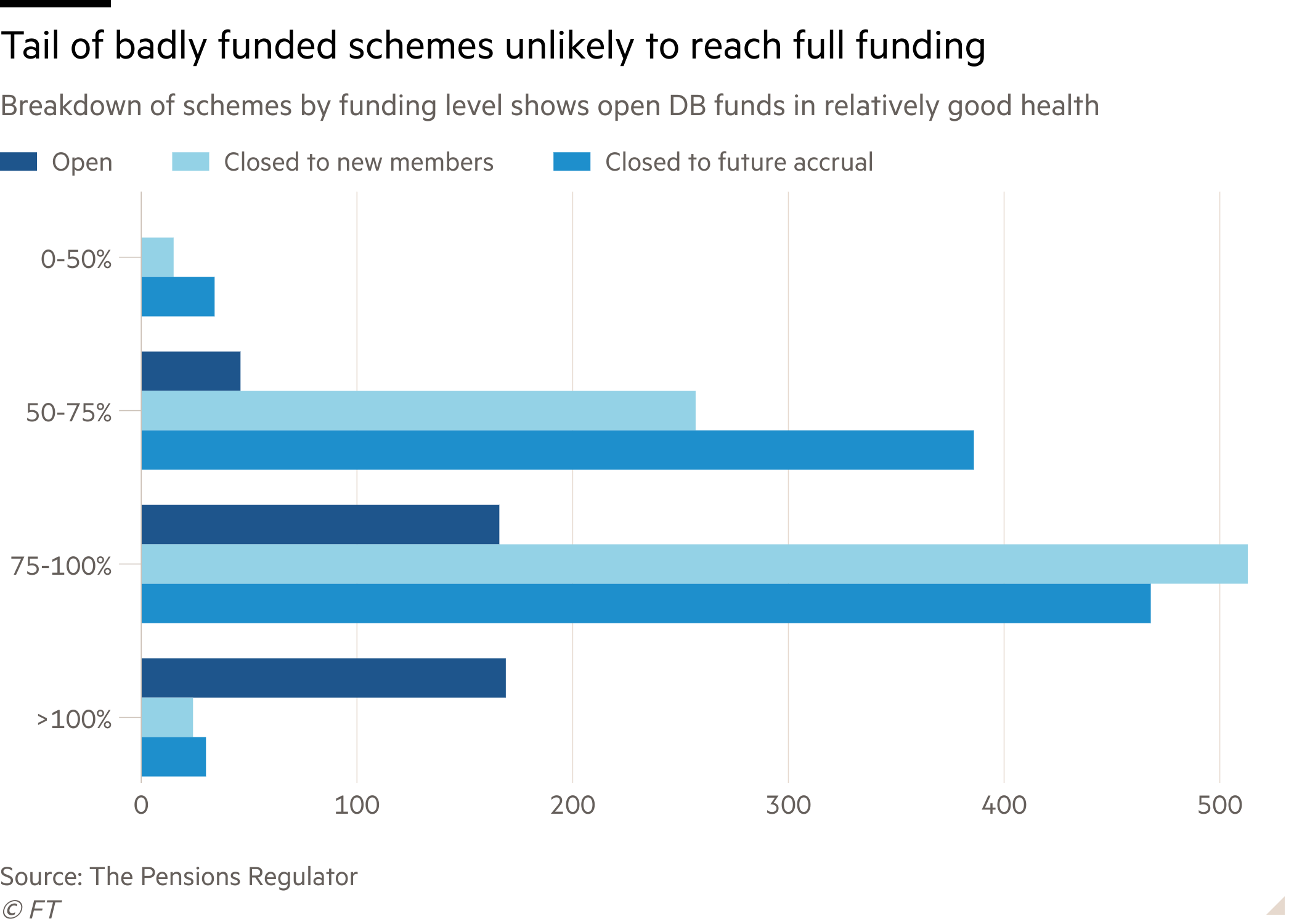Data crunch: Forty-nine defined benefit schemes are in a parlous state with funding under 50 per cent of their liabilities, the latest data from the Pensions Regulator reveals.
Updates from the Pension Protection Fund show a rosy aggregate picture of DB scheme health, steadily improving and inching towards PPF surplus. But the regulator’s own assessment released last week shows that this picture hides more than 700 schemes that may never make it to full funding.
Its January 2020 DB landscape report shows a slight deterioration from 2018, when 48 schemes were in comparative peril with assets totalling less than half their liabilities.
In addition, 689 schemes have funding levels between 50 and 75 per cent, although this is an improvement on 2018 when 743 schemes were in this uncomfortable position.
These schemes should act now to avoid being caught on the back foot by a revitalised regulator and new funding code
Laura McLaren, Hymans Robertson
Hugh Nolan, director at Spence & Partners, believes these schemes “may struggle to ever reach full funding on a technical provisions basis, let alone being able to buy out the promised benefits”.
For schemes with funding levels below 50 per cent, he says that “the prospects of meeting full funding must be quite low”.
Most schemes’ funding hovered between 75 and 100 per cent, with 3,499 schemes in this situation. This is “manageable over time”, Mr Nolan adds.

Laura McLaren, partner at Hymans Robertson, is less sanguine. “These schemes should act now to avoid being caught on the back foot by a revitalised regulator and new funding code,” she says.
There has been a substantial increase in the proportion of schemes in deficit over the past year, to almost 80 per cent from 70 per cent. However, this has been offset by a marginal increase in the funding level of schemes in deficit – up to 88 per cent from 87 per cent.
The net effect is a modest increase in total deficit in 2019 of £159bn, with assets of £1.7tn and liabilities of £1.86tn. The situation has worsened from 2018, when the aggregate deficit was £152bn, with assets at £1.65tn and liabilities of £1.8tn.
Mr Nolan notes: “All the employer contributions paid in to meet deficits over this 12-month period have been swallowed up without any real sign of improvement. It could have been a lot worse given everything that’s been going on.”
Schemes in surplus are also in less rude health than a year ago. TPR’s 2019 report shows their assets at £369bn, with liabilities of £347bn and a surplus of £21.83bn – down from assets of £484bn and liabilities of £458bn with a surplus of £25.6bn.
Smaller schemes prosper
By number, the DB universe continues to be dominated by smaller schemes, with the vast majority having less than 1,000 members. These plans seem to have done relatively well.
Penny Cogher, partner at Irwin Mitchell, says schemes with fewer than 5,000 members seem to have managed to stabilise their funding, “while the large schemes don’t appear to have done this”.
She explains: “This is probably because these smaller schemes are more manageable in terms of funding, and this helps the trustees and their sponsoring employers to get them stabilised.
“The proposed future changes to [the consumer price index] will obviously result in significant changes to the funding position of most schemes subject to scheme-specific funding as and when it is introduced.”
Adam Davies, managing director of K3 Advisory, also notes the relatively strong position of smaller schemes.
“A large number of those schemes are well funded, with almost 1,000 being funded more than 100 per cent on their TP basis and a further 1,688 being funded to better than 75 per cent,” he says.
“With the regulator keen for small schemes to improve governance or exit in some way, it is a key priority for the industry to make sure these schemes have access to the bulk annuity market.”
Nevertheless, the data should be treated with caution, as Ms Cogher explains: “The funding aspects of the regulator’s pensions landscape reports are something of a blunt instrument as the funding figures represent the plans’ scheme-specific funding valuations on a common date of March 31 2019.
She says the regulator’s rolling forward of individual figures to the same date can mean new actions to tackle deficits go unnoticed.
“It shows the effect of changed market conditions between the two dates on a consistent basis for all schemes. But it does not consider any other changes to a scheme’s asset and liability profile due to scheme experience, benefit changes, post valuation benefit accrual, demographic changes, curtailments, settlements, changes in asset strategy, scheme-specific investment performance, contingent assets, or covenant support,” Ms Cogher adds.






















